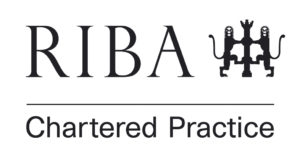Setting the Standard
RIBA stands for Royal Institute of British Architects and here at Turner and Hoskins, we’re delighted to have renewed our Chartered Practice Status. Here’s what the institute says about itself on the website:
‘The Royal Institute of British Architects is a global professional membership body driving excellence in architecture. We serve our members and society in order to deliver better buildings and places, stronger communities and a sustainable environment. Being inclusive, ethical, environmentally aware and collaborative underpins all that we do.’
That ethos very neatly sums up our own philosophy, which is one of the reasons we’re proud to be associated with such an august body, though we have yet to have the institute’s motto carved above our front door in Portland stone. It reads ‘Usui civium decori urbium’ – ‘For the use of the people, for the glory of the city’ – and refers to the earliest days of what is now RIBA, when it was solely for London architects and known as the Institute of British Architects in London. Less relevance then to our practice based in Edenbridge, Kent.
What’s the story behind RIBA?
A number of prestigious architects formed the Institute of British Architects in London in 1834 and co-opted Tory statesman, Thomas de Grey, 2nd Earl de Grey, to be its president. The institute received a Royal Charter in 1837. The underpinning principle of the charter remains relevant to this day:
‘… the general advancement of Civil Architecture, and for promoting and facilitating the acquirement of the knowledge of the various arts and sciences connected therewith…’
Early work was mainly concerned with laying down rules for fee-setting, best practice and appropriate conduct. Latterly, in 1996, RIBA inaugurated the Stirling Prize, and in 2014 opened an architectural gallery at its headquarters in Portland Place, where a massive library is also housed.
Why have we chosen to be accredited?
We adhere firmly to the principles underpinning the charter and we wish to make evident to our clients that we’re committed ‘to delivering the highest professional, ethical and best practice standards in architecture,’ to quote from their website.
Some of the things that we’re required to show are that we:
- demonstrate concern for the environment, as enshrined in our policy
- adhere to appropriate Equality, Diversity and Inclusion practices
- operate within rigorous Health & Safety regulations
- comply with Continuing Professional Development obligations
While these are responsibilities we would undertake without being chartered, it’s helpful for us to have them all laid out for us, as a sort of check list.
For our own purposes, RIBA offers us information and advice so we can ensure we’re up to date with current thinking and innovation in the field of architecture. It helps us to develop and grow as a business too, offering expert advice in fields such as HR, tax and GDPR.
What difference does our RIBA accreditation make to our clients?
Well, it’s like a kite mark – a quality assurance guarantee. It shows that we are serious about ethics, equality, diversity and inclusion and fair pay. While, of course, our job is to design beautiful and practical buildings, that creativity needs to be backed up with trustworthy, honourable and transparent practices in order to allow projects to come to fruition without compromising our clients’ peace of mind.
Architects with a conscience – that’s us.

